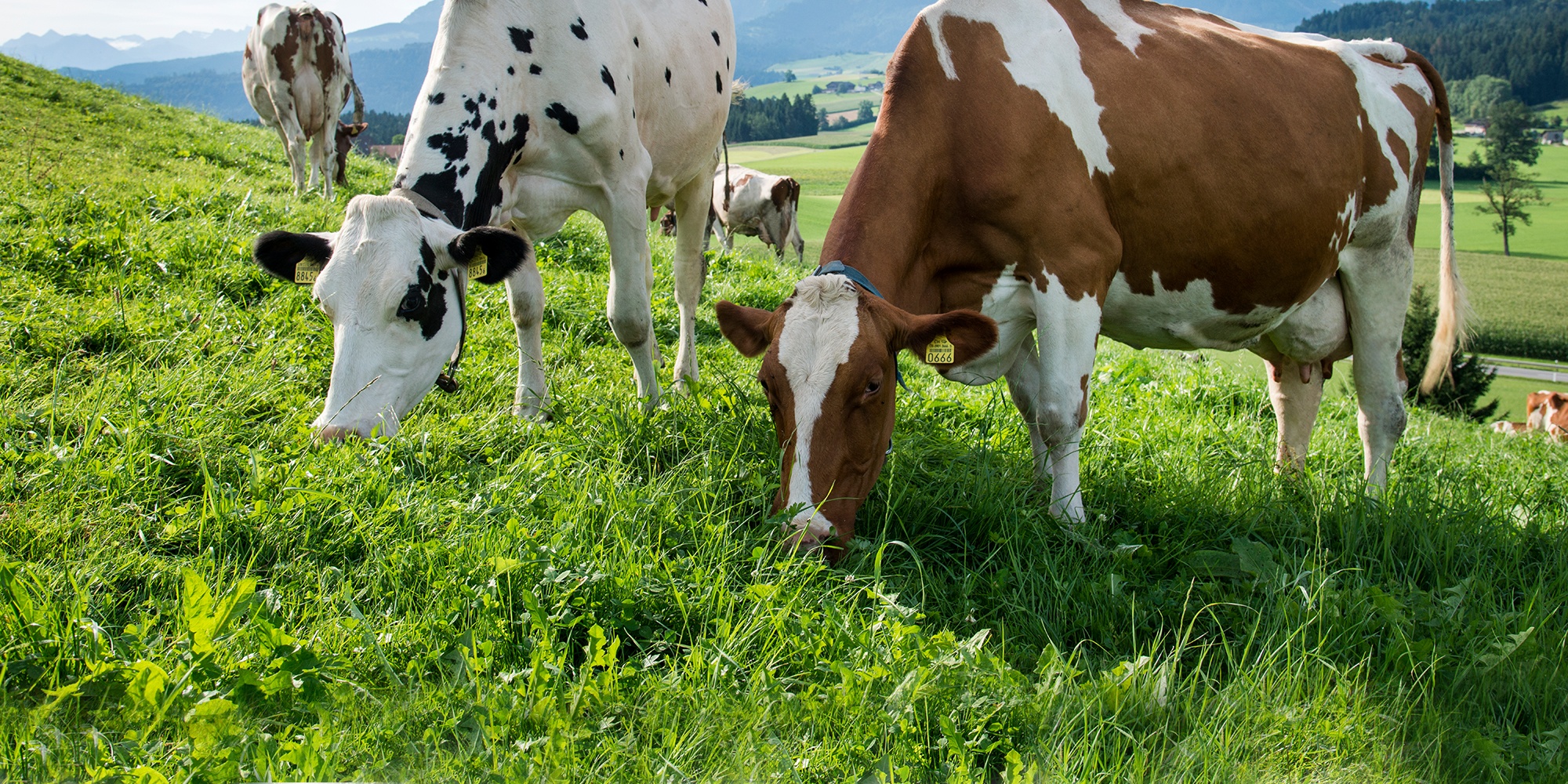How the Lifespan of Dairy Cows Affects Profitability
Photo: Gabriela Brändle,
Agroscope
A study examines the economic drivers of the optimal productive lifespan of dairy cows in two Swiss production systems.
If a healthy dairy cow calves regularly and produces more than 6000 kg of milk per year, it will have completed over nine lactations before reaching the economic optimum. But cows tend to be replaced much earlier. The average productive lifespan in Swiss dairy herds is usually considerably less than four lactations. In fact, most cows are culled during the first two lactations. This is mainly due to health disorders, fertility problems and concerns about economic losses.
Sharp rise in income up to the fourth lactation
A recent Agroscope study based on herdbook data from over 9700 cows which had completed ten lactations shows that, on average, the milk yield peaked during the fourth lactation and remained more at less at this level until the ninth lactation. A bioeconomic cow model was developed which linked accounting data from two groups of farms with different milk-yield levels – 110 farms with average annual milk yields of 6194kg per cow (C_low) and 79 farms with annual milk yields of 9338kg/cow (C_high) – with data for herdbook cows. The aim was to determine the optimal economic time to replace an older cow with a heifer. The results show that incomes increase particularly sharply from the first to the fourth lactation, but this rise gradually tails off from the fifth lactation.
Income potential up to 800 CHF per cow
Based on herdbook data, the average productive lifespan was 3.6 years for C_low cows and 2.9 years for C_high cows (corresponding to the baseline). In cases where early culling decisions are economically motivated, this would correspond to an annual production loss of three to four months (expected loss 25 to 33%), assuming that the culled cows had survived. This equates to an annual income loss of over 400 CHF per C_low cow and even over 800 CHF per C_high cow compared to a ‘trouble-free’ cow.
Rearing costs and slaughter values determine productive lifespan
Rearing costs, which range from 2300 to 5000 CHF per cow, are significant drivers of the productive lifespan of dairy cows. Thus for passionate breeders, the optimum replacement time for an older cow may be much earlier because they underestimate – or fail to take account of – the value of their own labour in rearing heifers. High slaughter prices also encourage early culling. Conversely, a full (and correct) assessment of their own labour may indicate that it makes economic sense to keep the cow for up to four more years, depending on the region and rearing period.
However, breeding progress was found to play a limited role in reducing the optimal productive lifespan.
Performance reliability before increased yields
Herds with age structures corresponding to an average productive lifespan of four years for high-yielding cows and six years for low-yielding cows can provide an annual income increase of 10 to 15% compared with the status quo (baseline). However, this increase is conditional on a greater focus on yield stability with regular calving (performance reliability).

Conclusions
- Realistically extending the productive lifespan of dairy cows can enhance profitability by 10 to 15%.
- Production losses are particularly high for high-yielding cows, so lower-yielding cows can soon become more economical if their better fitness enables them to remain productive for longer.
- ‘Trouble-free’ cows with high performance reliability are mostly unremarkable and should not be culled prematurely, even if replacement heifers promise higher milk yields.
- To improve performance reliability in dairy production, it makes sense for farms to define milk yield targets aligned to the region and the management system.
Bibliographical reference
Economic drivers of the optimal productive lifespan of dairy cows in two different Swiss milk production systems.



